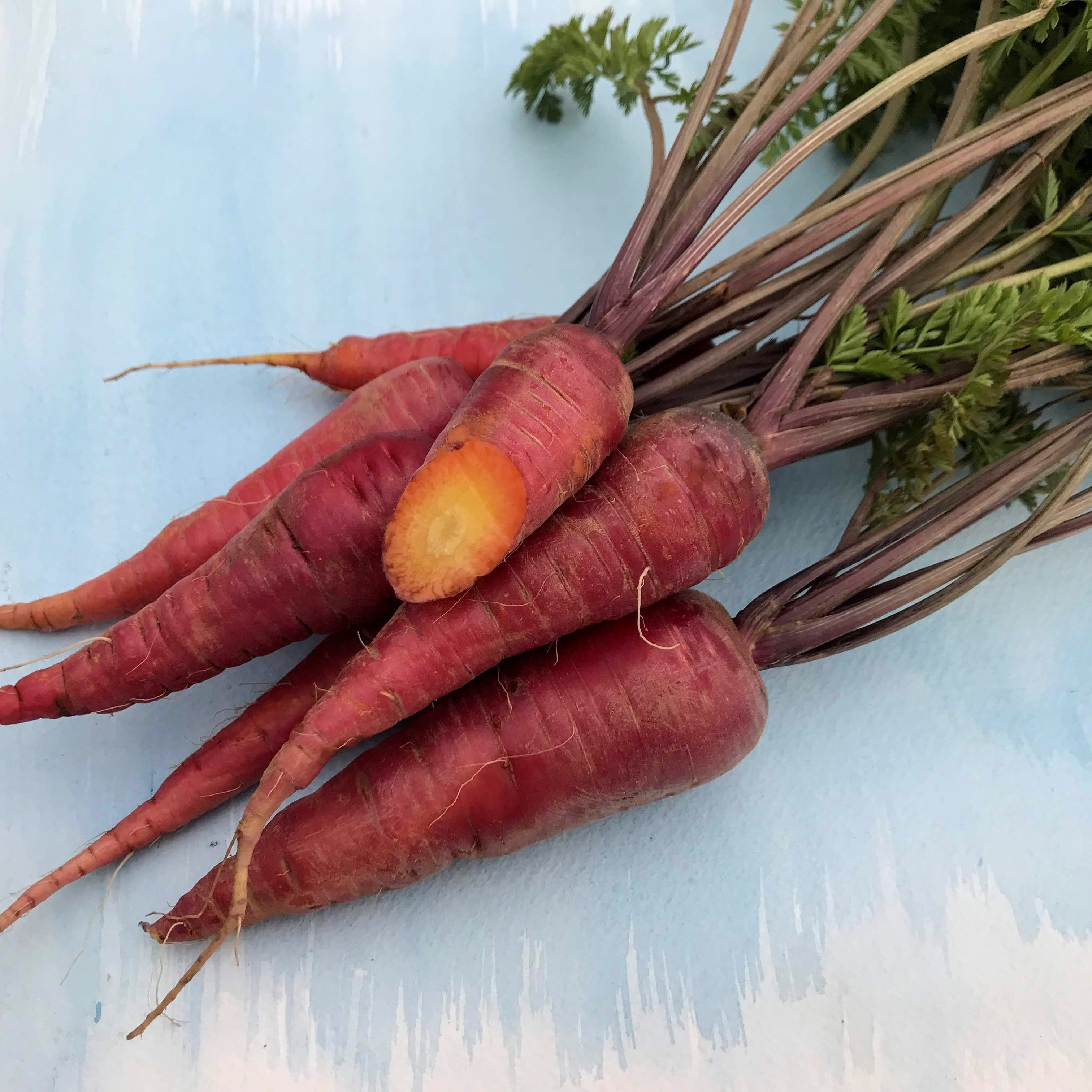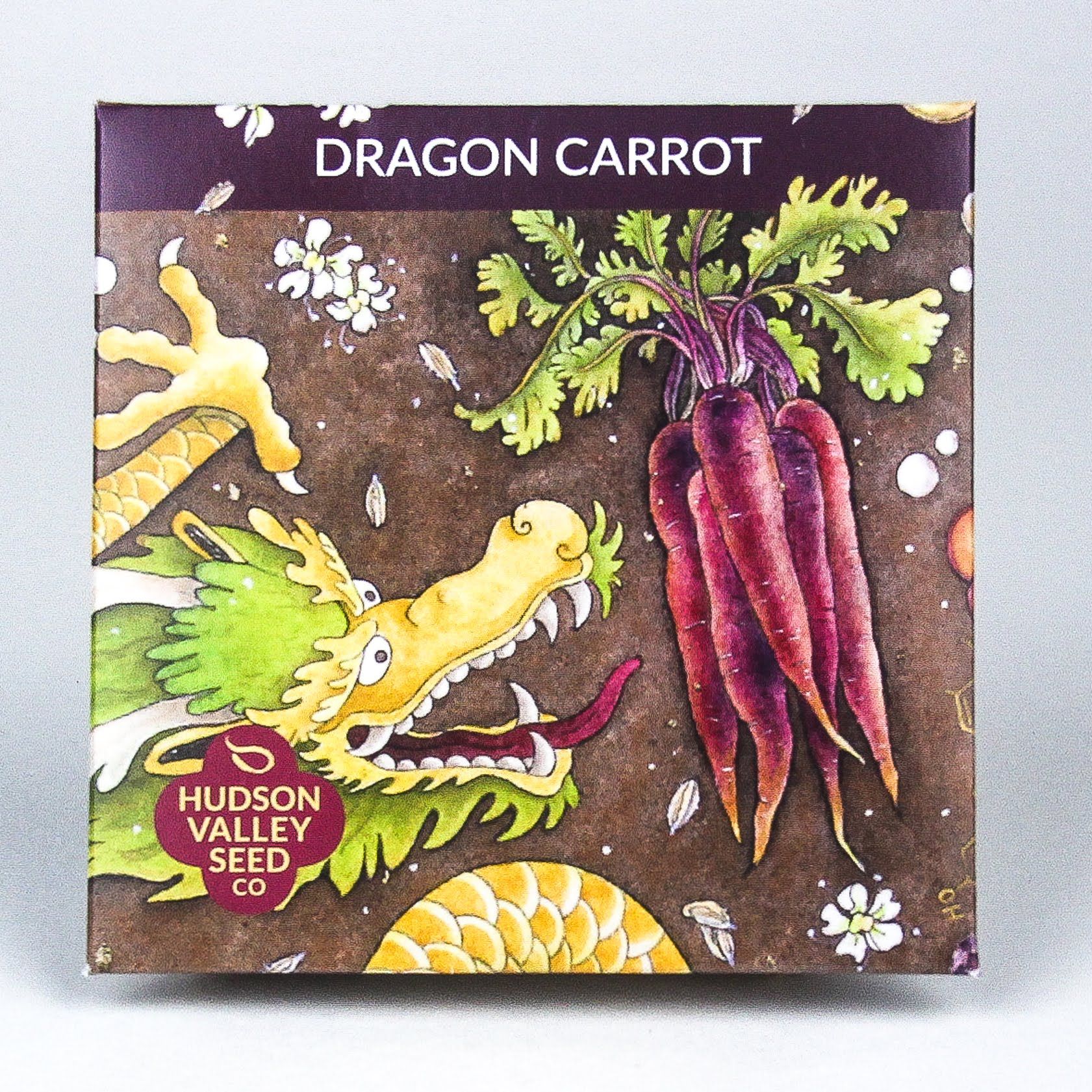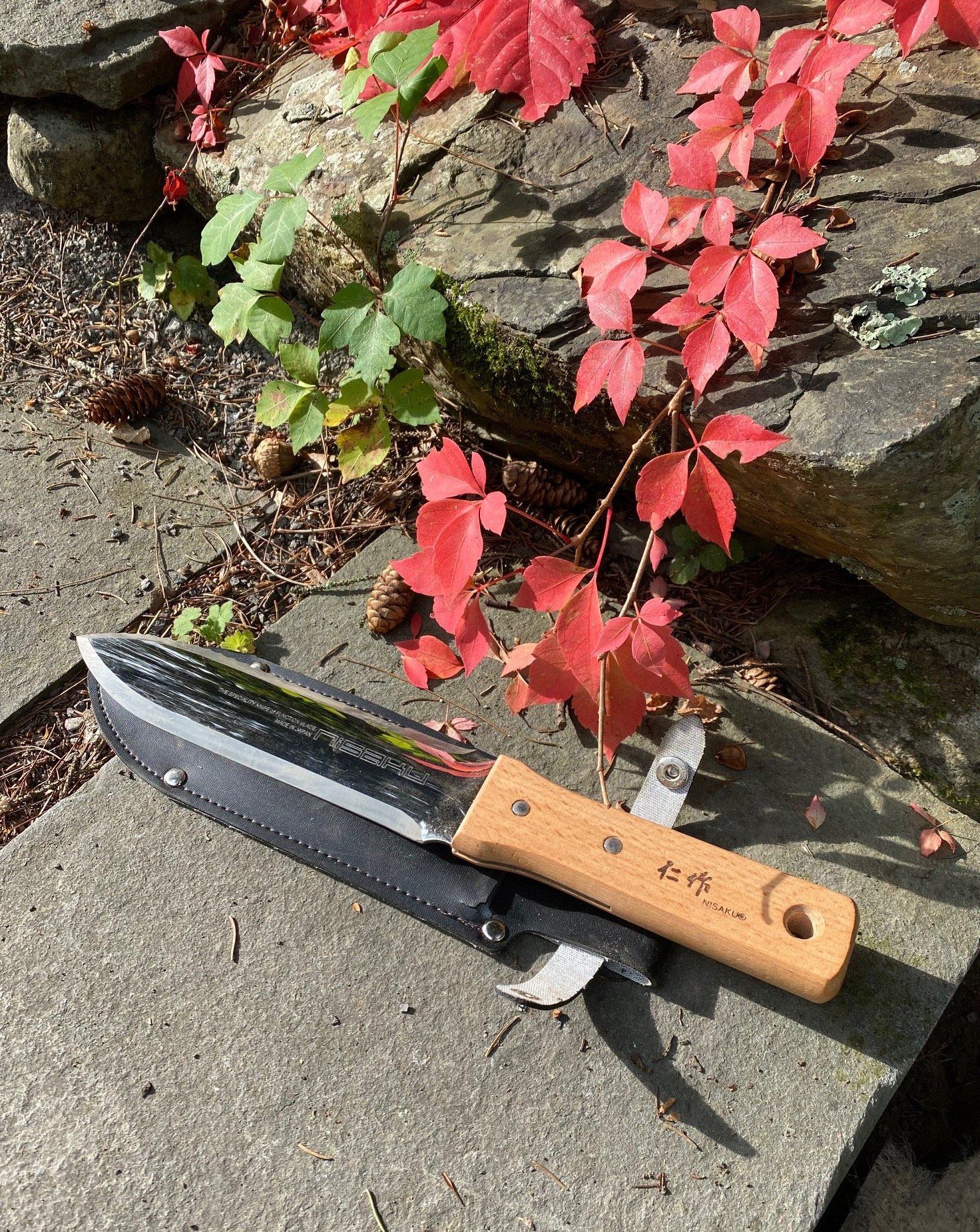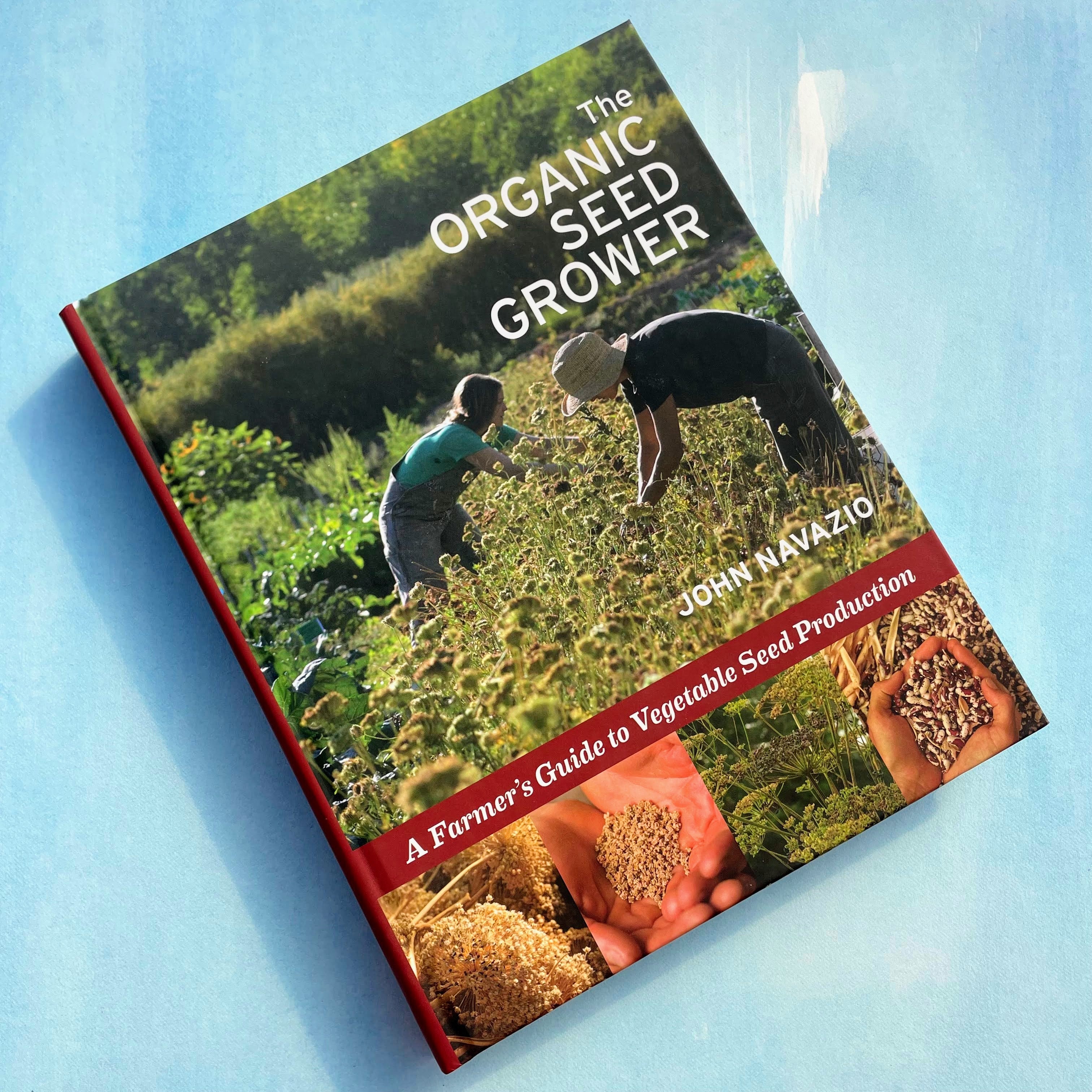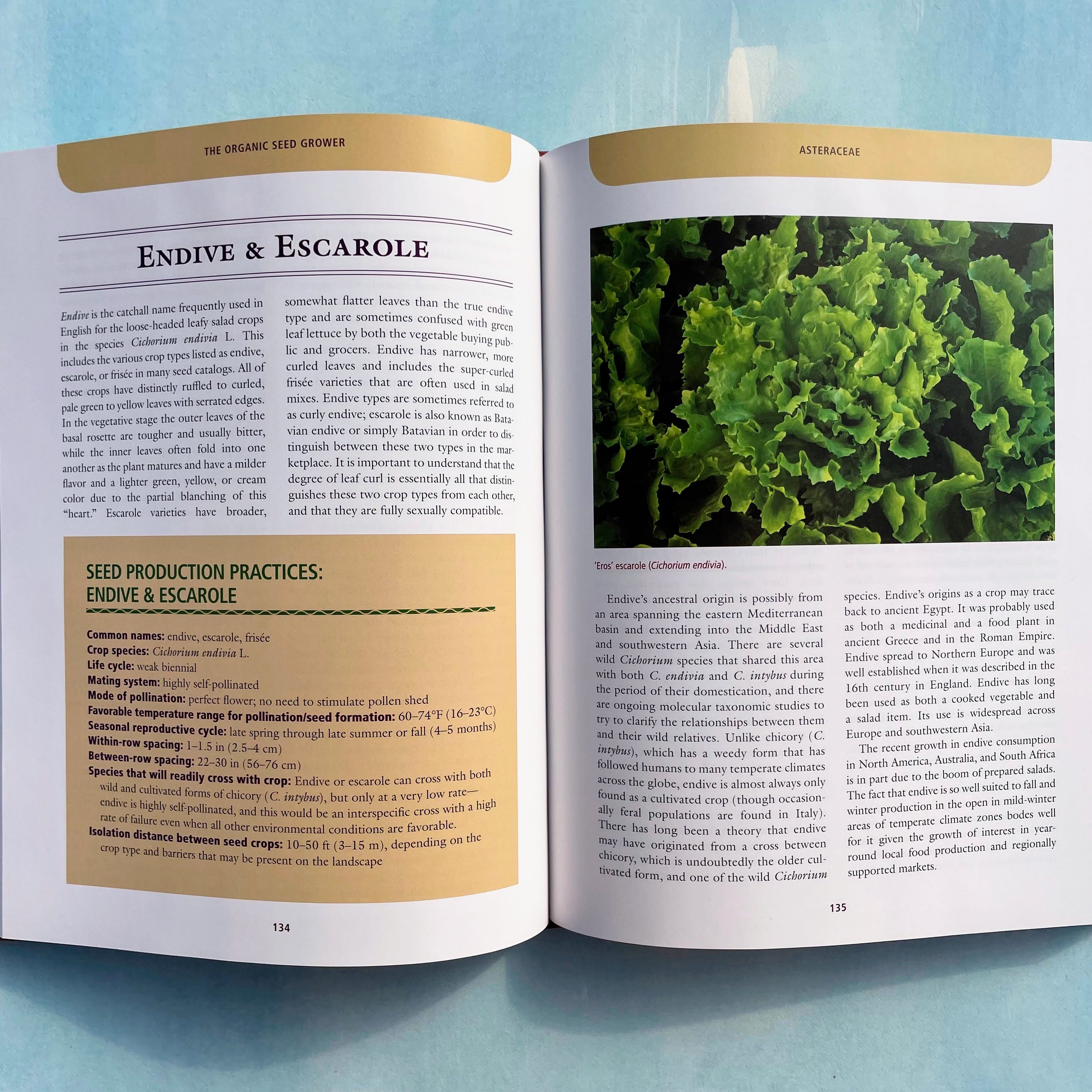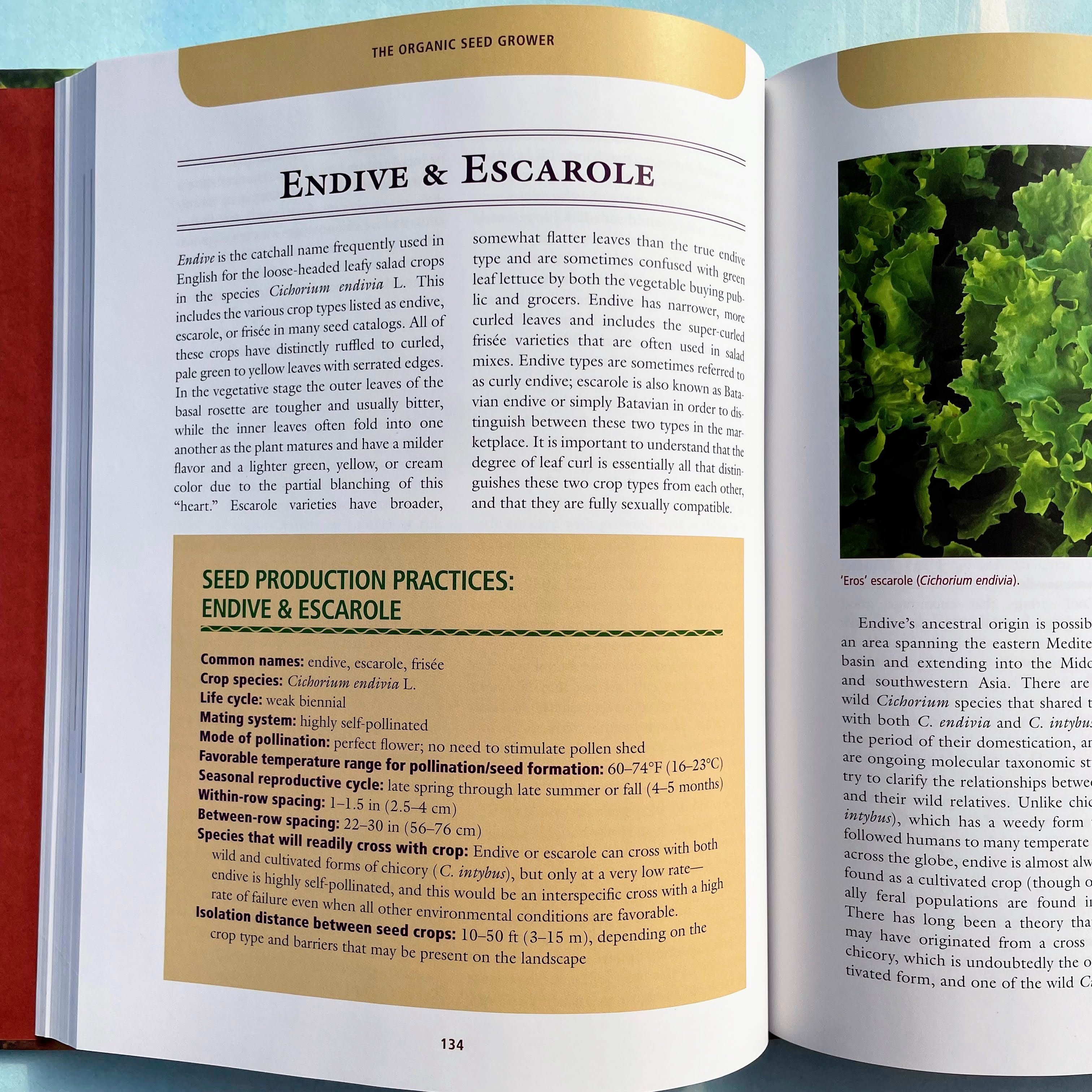
Carrots are commonly thought of as one of the most unshakably orange things on the planet. But it turns out it isn't that simple—carrots have never ascribed to such restrictions, not in the past and not now. Take the Dragon Carrot, for instance: the first thing you'll notice when you pluck it from the earth is that its skin isn't orange but rather a burnished purple. Cut a cross-section and the surprises continue: inside, rings of gold melt into a yellow core. Maintaining a sweet, carroty flavor, Dragon Carrot defies the belief that a good carrot must be orange. It's still a rare gem, though, which is why we grew it ourselves on our Hudson Valley seed farm.
This special variety was bred by John Navazio and his team in Washington State. When we talked to John about his team's creation, however, he told us that—just like the carrot's colorful core—there's more to the story. One of the parent varieties was of Chinese origin, and when we chose Dragon Carrot for our 2020 Art Pack Collection, we wanted to celebrate the modern variety, but also reach further back than its recent introduction and honor the history. To this end, we chose to work with Chinese-American artist JiaJia Hamner, whose work represents the intersection between traditional Chinese painting and contemporary illustration.
JiaJia, what can you tell us about your background and how it influences the art you make?

As someone with a background in physics, I love making art related to science. And as someone who was born in China, but grew up in North America, I feel the need to learn more about my native culture. Thus, I was extremely excited when given the opportunity to create the artwork for the Dragon Carrot seed packet. It perfectly fulfilled my appetite to combine inspiration, Chinese art and culture, and a little bit of science all into one project.
Making illustrations and art is my favorite way to communicate. It is my way of sharing how I view the world. At the very least, I aim to make art which will help inspire people to improve some aspect of their lives. I also strive to make art which prompts people to be curious and ask questions. Once someone starts investigating, they are on their way to learning something, and there is nothing quite as delightful as understanding something new.
Your work reflects modern illustration styles while also pulling from traditional Chinese styles. Can you tell us a bit about those traditions?
Traditional Chinese paintings are commonly divided into two major categories: meticulous (gongbi) and freestyle (xieyi). Meticulous paintings tend to be highly detailed with very fine brushstrokes, while freestyle paintings tend to be more expressive. Often ink is the only pigment used to create freestyle paintings. The meticulous style of painting has a longer history than freestyle painting. Thus, to celebrate the long history of carrot breeding, I decided to create the artwork for Dragon Carrot in the meticulous style. This also allowed for the level of detail I envisioned. In addition, I used traditional paints, brushes and xuan paper.
So when it came to creating this piece, what was your process?

After the sketches for the seed packet were approved, I finalized the size and composition digitally in Photoshop. The line art was lightly transferred onto xuan paper with a pencil. This drawing was then mounted onto a piece of plywood in preparation for painting.
The background texture was painted first using diluted ink, and depth and shadows created with several applications of very dilute ink. Before adding color, the outlines of the dragon and carrots were darkened with a small brush and ink.
Color is slowly built up with 5 or more layers of diluted paint. Each layer must be allowed to dry completely before the next application. Painting this way gives the finished work a soft and subtle glow. The xuan paper I used was sized with potassium alum. The alum decreases the natural absorbency of the paper, which allows for precise and repeated application of pigment.
After many layers, the desired saturation of color was reached. I then painted the background a reddish brown while allowing the texture and shading of the ink layer to come through. Lastly, details such as the anthers on the flowers, the highlights on the jewels and the gold of the anthocyanin molecules were added. Once the painting was completely dry, it was unmounted from the board.
There's such a rich assortment of characters and symbols in your painting; let's go through some of them. Of course, the star of this Art Pack is the Chinese dragon. Why are dragons relevant to Dragon Carrot?
There are many dragons in Chinese folklore. The one featured here is guardian to the earth’s precious metals and jewels and is called the Fucanglong or “hidden treasure dragon”. I wanted the Fucanglong to look as if it was “swimming” through the earth with an earthworm-like finesse. As it patrolled its underground kingdom, the dragon happened upon these wonderful reddish-purple carrots. Upon taking a bite, Fucanglong discovered them to be bright orange and yellow on the inside. The dragon immediately decided to add this carrot to its list of treasures to guard because it is so tasty and beautiful.
There are some repeating images scattered throughout the piece, namely the hexagons and flowers. Why did you choose to include them?
It was fascinating to learn that the bright reddish-purple hues of the dragon carrot are a result of pigments called anthocyanins. These molecules are said to have antioxidant properties and are responsible for the blues, purples and reds of berries, red onions, grapes, red cabbages, tomatoes, eggplants, and more. Since its color is such a defining characteristic of this carrot, I felt it appropriate to represent the presence of these pigments with simplified molecular diagrams characterized by hexagonal rings. If you look carefully, these can be seen distributed throughout the painting.
To acknowledge the breeding history of this carrot, I had originally intended to include umbels of carrot flowers along with seeds in the artwork. However, as I took a closer look at the bundles of carrot flowers, the tantalizingly-detailed structure of each tiny flower beckoned me to focus on them individually. Thus, as you let your eyes drift across the artwork, you will find individual flowers drifting along with you.
Speaking of pigment, your use of color was very deliberate here. What was the thinking behind the color palette?

The dominant colors I decided to use are reds/purples, golds/yellows and orange contrasted with light jade-green hues. In Chinese culture, red is the color of good fortune and happiness. Purple is a luxurious color symbolizing divinity and immortality (quite appropriate given that anthocyanins can provide health benefits). Orange, like red, is a happy color, often associated with plentiful harvests and celebration. Yellow represents power and prosperity, and is traditionally associated with the emperors of China. Lastly, green is associated with health and harmony. I chose a traditional yellow color for the body of the dragon to contrast with the red/purple of the carrots, while the green on the dragon echoes the green of the carrot tops.
What do you hope to inspire in people when they see this work of art?

My hope for this painting is first, to raise awareness of the many varieties of carrots available. Second, I hope for people to ask questions about the history of this carrot so that they may eventually discover how it relates to the Chinese dragon I have illustrated. Third, I hope to encourage people to examine carrots (and other plants) in more detail. I hope someone might wonder just how realistic those carrot flowers I painted really are and go take a look at some actual carrot flowers for comparison. I also hope that the artwork generates enough excitement for people to make an effort to grow dragon carrots along with other organic open-pollinated and heirloom plants. ■
JiaJia was also eager to share a discovery she made while researching purple carrots: there is an entire virtual museum dedicated to carrots. She recommends browsing through the carrot’s history.
Go to jiajiahamner.com to learn more about JiaJia and her fantastic co-created children's book, The Poetical Institute's Peculiar Powers of Vegetables and Fruits
How to grow Dragon Carrot:
Sow in a very well-prepared, fertile, smooth garden bed. Choose your least weedy soil, as carrots can be tricky to cultivate when young. Keep summer sowings moist to improve germination and thin to indicated spacing. For the sweetest roots, start a fall crop mid-summer; the cooler temperatures cause the starches in the roots to turn into sugars.


